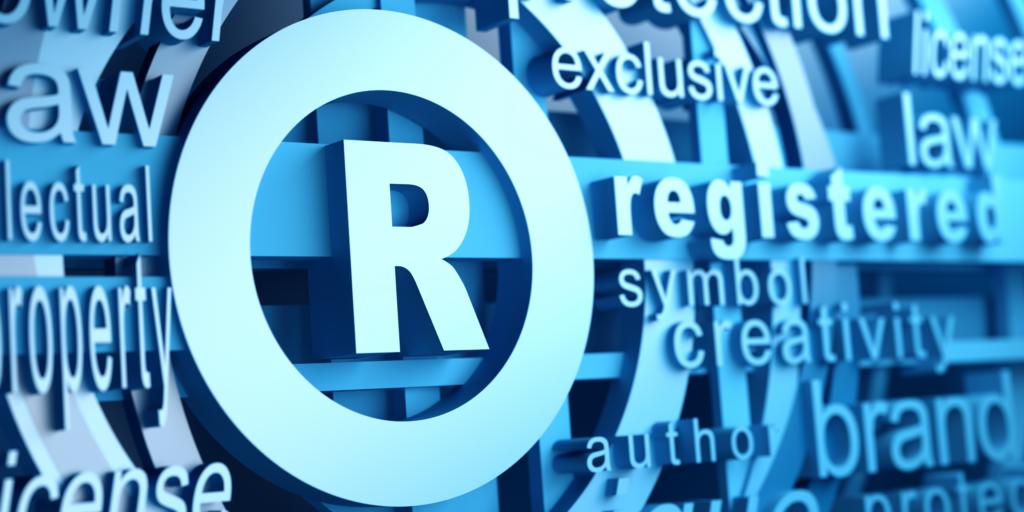
I. What exactly is the definition of a trademark?
A trademark serves as a distinctive identifier for goods or services associated with a particular business. It can take various forms, such as a brand name, logo, or slogan. The primary purpose of a trademark is to prevent consumer confusion by ensuring that products or services from different sources are easily distinguishable.[i]
A trademark (popularly known as brand name) in layman’s language is a visual symbol which may be a word signature, name, device, label, numerals or combination of color’s used by one undertaking on goods or services or other articles of commerce to distinguish it from other similar goods or services originating from a different undertaking. The legal requirements to register a trademark under the Act are:
- The selected mark should be capable of being represented graphically.
- It should be capable of distinguishing the goods or services of one undertaking from those of others.
- It should be used or proposed to be used mark in relation to goods or services for the purpose of indicating or so as to indicate a connection in the course of trade between the goods or services and some person have the right to use the mark with or without identity of that person.[ii]
II. How does adopting a trademark help my business?
Trademarks serve as distinctive symbols utilized in the marketplace to differentiate the goods or services of one enterprise from those of others. They play a crucial role in enabling customers to recognize a business as the origin of a particular product or service.The foundation of a company’s brand and reputation lies in trademarks, fostering a relationship of trust with customers. This trust, in turn, facilitates the establishment of a loyal clientele and contributes to enhancing the goodwill of the company.Trademarks are instrumental in guiding consumer purchasing decisions by capturing attention and making products stand out in the market. They act as identifiers of product source and assure consumers of a consistent level of quality, thereby preventing confusion in the marketplace. Recognized as valuable intellectual assets, trademarks play a pivotal role in shaping the identity and success of a business. Importantly, unlike some forms of intellectual property, trademarks do not have an expiration date, providing lasting protection for businesses.[iii]
III. How do I choose a trademark for my business?
Careful consideration is pivotal when choosing a trademark for any business, and several factors come into play:
- Ease of Recognition: Opt for a trademark that is easy to speak, spell, read, and remember.
- Distinctiveness: Avoid choosing identical trademarks within the same business sector, but explore options that are similar without causing confusion.
- Steering Clear of Well-Known Marks: Stay away from trademarks resembling widely recognized ones such as Tata, Sony, Honda, or Google. For instance you can look at the case Facebook v. Facecake/Facebake which we have explained in detail here.
- Global Uniqueness: Ensure that the selected trademark is not already in use by someone else in a foreign country.
- Respecting Sensitivities: Avoid adopting marks containing scandalous, obscene, or religiously sensitive matter, exemplified by the prohibition of using holy books like “Ramayana” for incense sticks.
IV. How do I register my trademark?
Following a thorough trademark search and identifying the perfect mark for your business, the subsequent steps outline the process for registering your trademark.
Stage 1, involves filing the trademark application once it is determined that no similar trademark exists. This can be done either online on the official website (www.ipindia.com) or physically at the relevant Trademark Registry based on the applicant’s jurisdiction. The Trade Marks Registry, headquartered in Mumbai with offices in Ahmedabad, Chennai, Delhi, and Kolkata, has jurisdiction over specific states in India. Foreign nationals or entities can also apply for trademark registrations in India, choosing the appropriate Trademark Registry based on their address of service or their local attorney’s location.
Documents required for filing include applicant details, specifications of goods/services, information on whether the trademark is in use, and supporting documents such as invoices etc. to claim user date. The Registry assigns a filing date and application number upon receiving the application. The applicant can then use the trademark with a superscript “TM” symbol, indicating that a trademark application has been submitted.
In Stage 2, trademark applications undergo examination by the Trade Marks Registry within one to two months. Objections may be raised on absolute grounds (e.g., lack of distinctiveness) or relative grounds (e.g., similarity with an earlier trademark). Responses to objections must be filed within one month, and if not received, the application is deemed abandoned. Further objections may lead to a show cause hearing.
Moving to Stage 3, if the Examiner is satisfied, the trademark is accepted and advertised in the Trademarks Journal, open for opposition for four months. Your trademark can be rejected or refused in certain circumstances. To learn more about grounds of rejection of trademarks, you can refer to our detailed analysis here.
Stage 4 encompasses registration and renewal. If no opposition occurs, the trademark is registered for ten years, renewable every decade thereafter. The applicant receives a soft copy of the registration certificate, and the symbol ®can be used with your trademark. The Registrar issues renewal notices, and if not renewed or restored within the prescribed time, a trademark may be removed from the Trademarks Register. Restoration is possible within six months to one year after the prescribed time, accompanied by an additional fee. Failure to renew or restore results in removal from the Trademarks Register.[iv]
[i] What is a trademark?. United States Patent and Trademark Office – An Agency of the Department of Commerce. (2023, November 30). https://www.uspto.gov/trademarks/basics/what-trademark
[ii] Frequently asked questions (FAQs) | Trade Marks | Intellectual Property India. (n.d.). https://ipindia.gov.in/faq-tm.htm
[iii] https://www.wipo.int/ip-outreach/en/ipday/2022/toptips/trademarks.html
[iv] https://ipindiaonline.gov.in/trademarkefiling/UsefullDownloads/User_Manual_etrademarkfiling.pdf